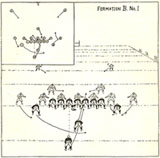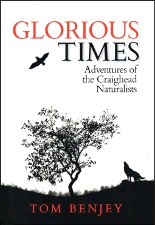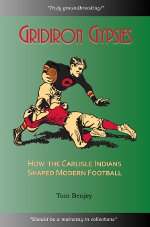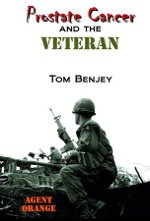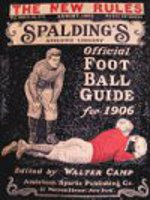We interrupt the coverage of Carlisle’s 1903 post-season trip to the West Coast to ask for a little help with another topic dear to our hearts. Coverage of that trip should continue with the next post. David Neft discovered some 1919 newspaper articles that list Lone Star Dietz as having played pro football. Of course, we’re dying to know more about this. Unfortunately, he didn’t have time to get copies of these articles. So, we’re asking anyone who has access to the newspapers in question, probably on microfilm, to send us scans of the articles.
Mr. Neft found that the Detroit Free Press had Dietz playing halfback for the Detroit Maroons on October 26 and November 9, 1919. The article also had three other Carlisle players in the Maroons’ lineup, including tackles Big Bear and Chief Cloud.
Other research has found listings of Dietz playing three games for the Columbus Panhandles in 1920 at guard and tackle, but no photos have been found to substantiate those claims. Dietz was 35 in 1919, an old age for athletes at that time, a factor that argues against him playing pro football in 1919 and 1920. On the other hand, his exact whereabouts in the 1919 and 1920 football seasons are not known and he is belied to have been broke and out of work at that time. Previous conjectures have him working in the motion picture industry at that time, but he was also available to play football. Any assistance would be most appreciated.
November 9
